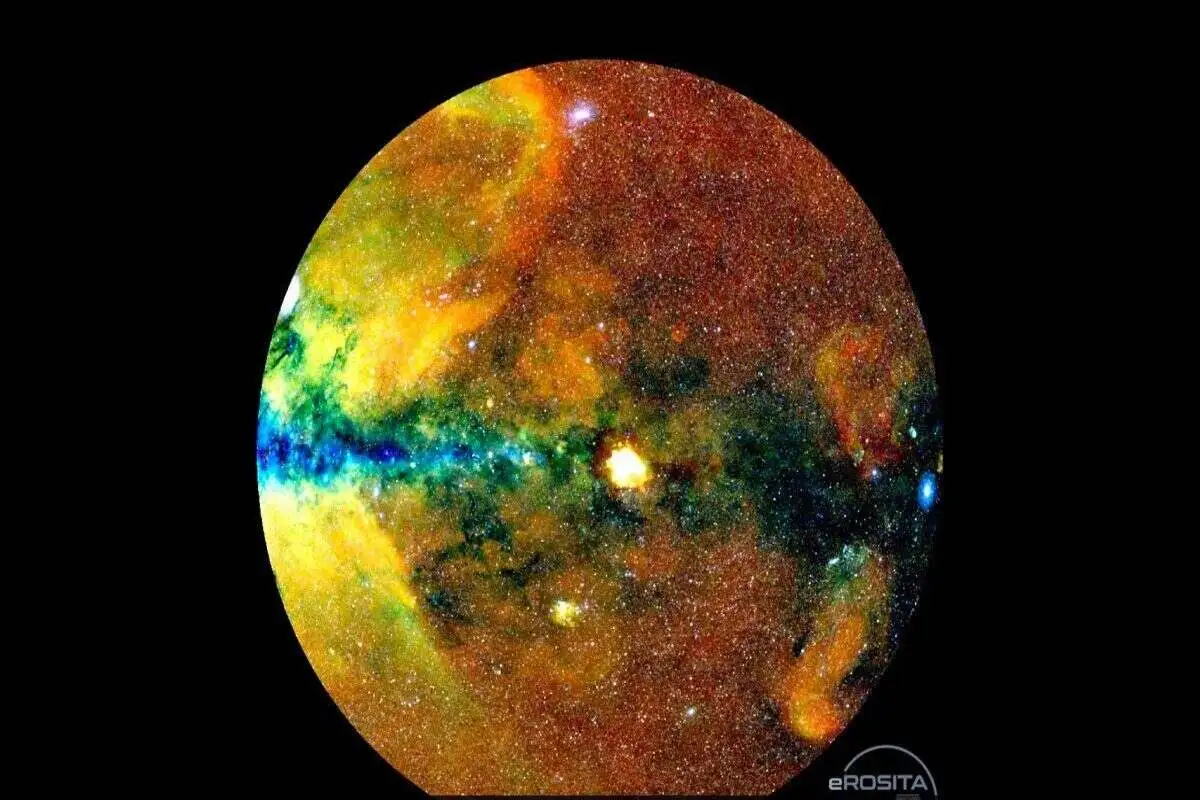
The X-ray map of the universe also revealed over 9,00,000 high-energy cosmic sources
The largest-ever X-ray map of the universe has been revealed by scientists, unveiling over 900,000 high-energy cosmic sources, including an impressive 710,000 supermassive black holes. The German “eROSITA” consortium recently published data collected by the eROSITA X-ray telescope, housed on the Russian-German satellite Spektrum-RG.
Released on January 31, the first eROSITA All-Sky Survey Catalogue (eRASS1) stands as the most extensive compilation of X-ray sources ever disclosed, according to the Max Planck Society in Germany, which played a key role in managing the mission. The society’s official statement highlighted that within the initial six months of observation, eROSITA surpassed the number of X-ray sources known throughout the 60-year history of X-ray astronomy.
An X-ray image of half the #universe: the first publication of the eROSITA sky-survey data release makes public the largest ever catalogue of high-energy cosmic sources 😲 https://t.co/POg5FuVraP @eROSITA_SRG @MPE_Garching pic.twitter.com/X21gnUD6iW
— Max Planck Society (@maxplanckpress) January 31, 2024
The eRASS1 observations were conducted by the eROSITA telescope between December 12, 2019, and June 11, 2020. Following this period, eROSITA entered “Safe Mode” in February 2022 and has not resumed science operations since, as indicated by the Max Planck Society.
Also Read: Morgan Stanley Acquires Paytm Shares Worth ₹244 Crore, Securing a 0.8% Stake Amid Stock Downturn
Among the 900,000 high-energy cosmic sources, the remarkable findings include approximately 710,000 supermassive black holes in distant galaxies. Additionally, the sources encompass 180,000 X-ray-emitting stars within the Milky Way, 12,000 galaxy clusters, and a variety of other exotic entities such as X-ray-emitting binary stars, supernova remnants, pulsars, and more.
Andrea Merloni, eROSITA principal investigator, expressed the astonishing impact of these findings on X-ray astronomy, stating, “These are mind-blowing numbers for X-ray astronomy. We’ve detected more sources in 6 months than the big flagship missions XMM-Newton and Chandra have done in nearly 25 years of operation.”
To read more such news, download Bharat Express news apps



















